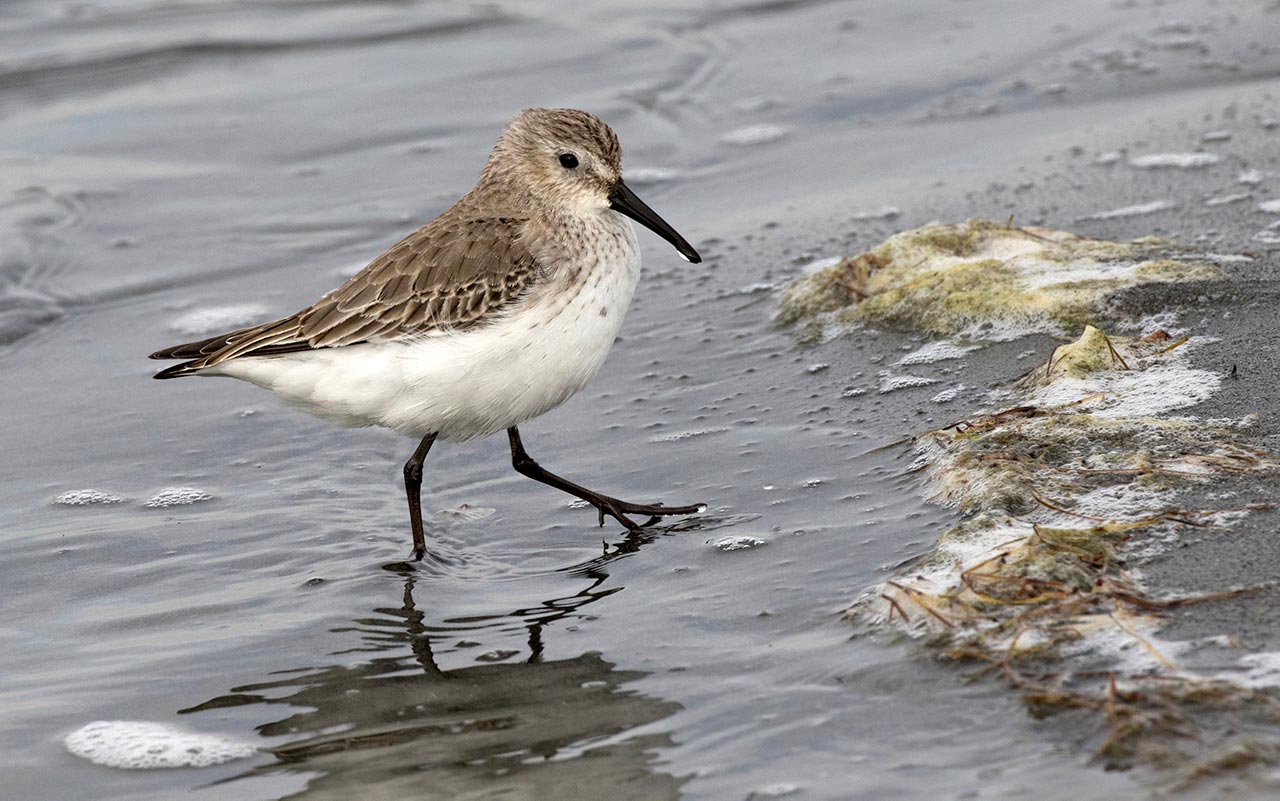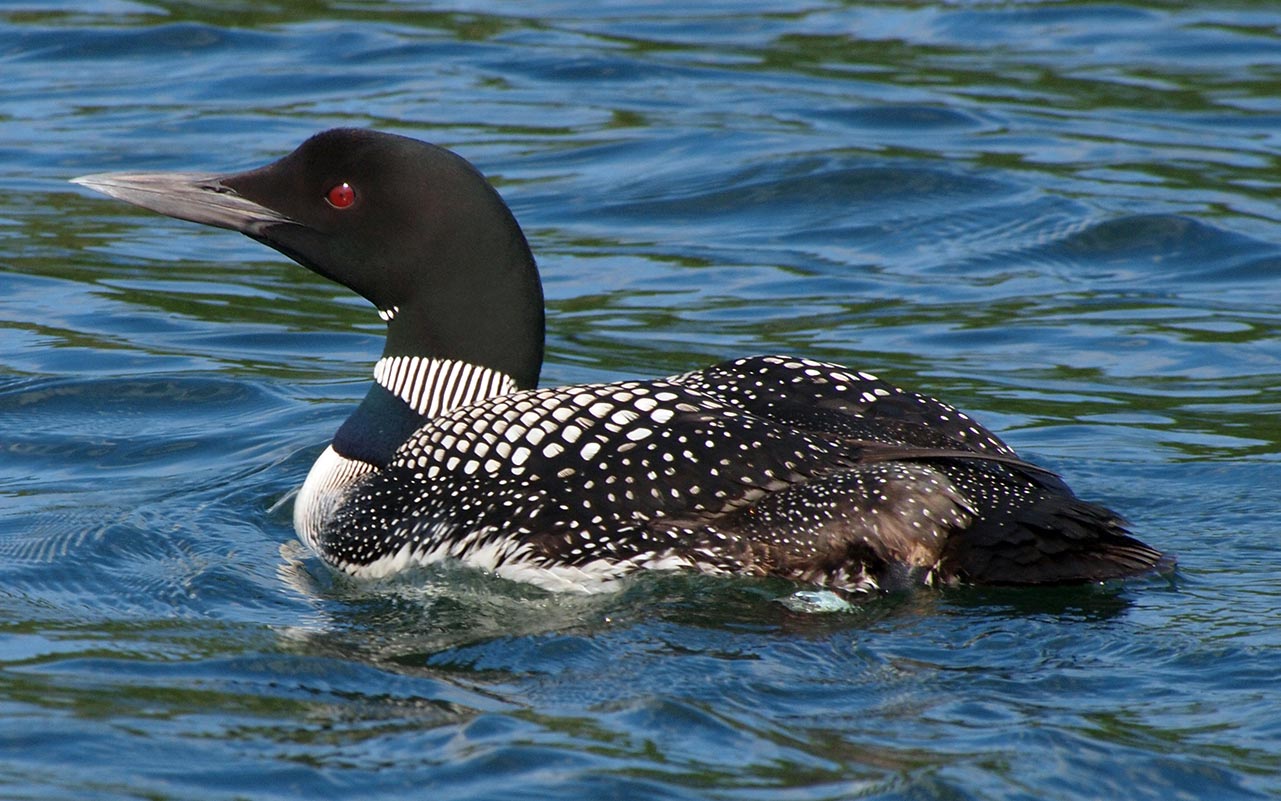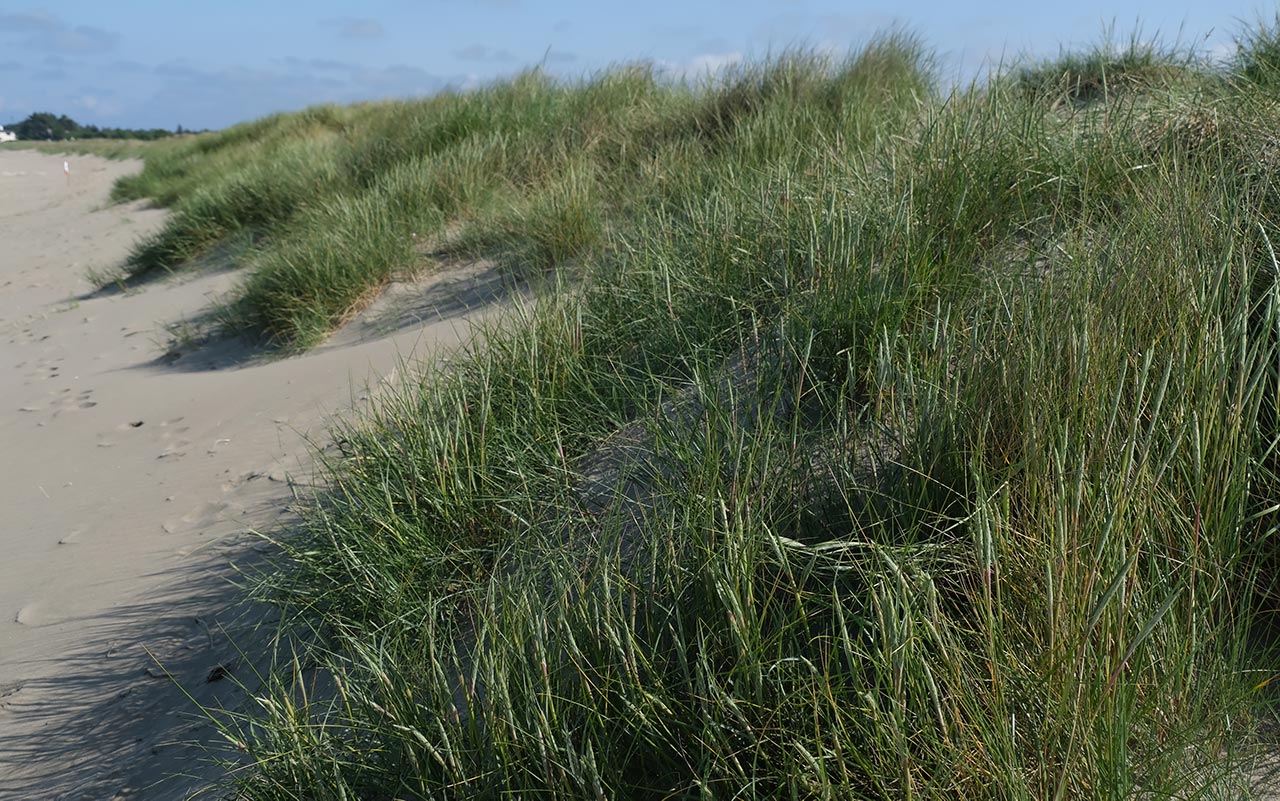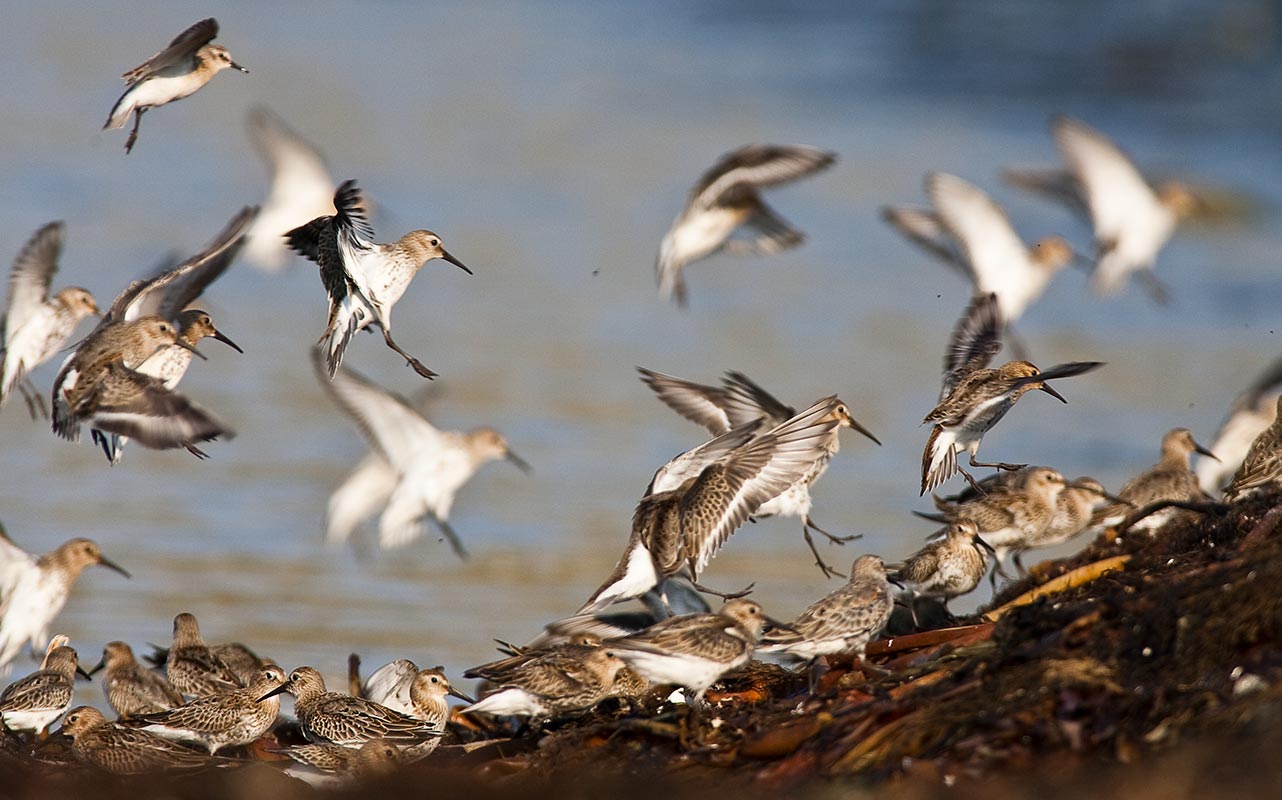Plant and animal life

A field of flowers behind the dunes.
Photo: Erik Thoring
Running across the sand
The sanderling is a small white and pale grey wader that you might come across on the beach at Solastranden during its autumn migration. It literally runs across the sand. While other waders prefer to feed on rotting seaweed, the sanderling finds its food on what appears to be desolate sand. It belongs to the snipe family and is about the same size as a small thrush. It nests only in the Arctic.

A sanderling.
Photo: Zeynel Cebeci
Down from the Arctic
You will need binoculars to get a good look at a great northern diver. It’s a big bird, but it sits low on the water and keeps its distance. Almost every winter you can see great northern divers out at sea in the bay, together with other species of the diver family. The great northern diver is widespread across the Arctic, and a few pairs breed in Svalbard. They spend winter along the Norwegian coast, including here in the bay at Solastranden.

A great northern diver.
Photo: John Picken
Our best friend
We have a lot to thank the tough, metre-high, marram grass for. It has played a major role in helping to stop the movement of sand that caused so many problems for local farmers a century ago. Marram traps the wind-blown sand, helping the sand dunes to form. When the dunes are stabilised, mosses and other plants arrive, helping to bind the sand and keep it in place.

Marram grass.
Photo: Erik Thoring
Bird food on the beach
Kelp grows at depths of between two and 15 metres along the Jæren coast. In the past it was a valuable resource for local farmers, who gathered it from the beaches for fertiliser. Today, only the birds benefit from this resource. As the banks of kelp rot away, they serve as hatcheries for a myriad of insect larvae that in turn provide nutrient-rich food for the birds.

Dunlins feeding on washed-up kelp.
Photo: Roy Mangersnes
The purple field gentian
Field gentians thrive on dry, lime-rich and unfertilised soils. The dune heathlands at Solastranden offer excellent conditions for this and other sweetroot species. The field gentian grows to between five and 30 centimetres high. Its purple or white flowers have four petals, and can be seen from June to September.
Please remember – it not permitted to pick flowers in the conservation area!

The field gentian.
Photo: Bjørn S.